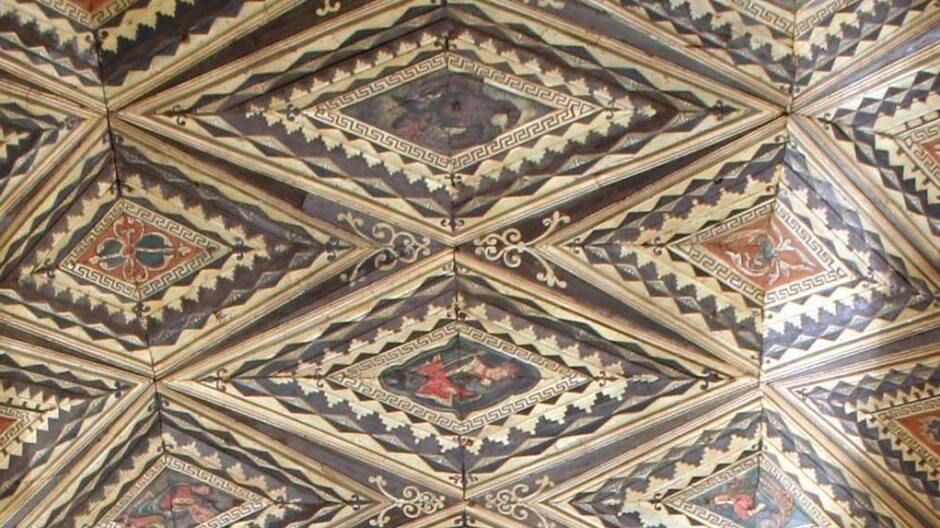‘Wall painting conservation in private practice’ is clearly far too big a subject to cover in ten minutes. So, in this short talk I will be focusing on one particular aspect – documentation. I will discuss how we have developed our own approach to data collection over the years and how it differs from the way things were done previously. And also how we have reacted to significant changes in our profession: principally a greater focus on the importance of good data collection and condition recording. Finally, there will be some thoughts for the future.
I’ll start with a very brief bit of background, for those that don’t know how the Perry Lithgow Partnership came into being.
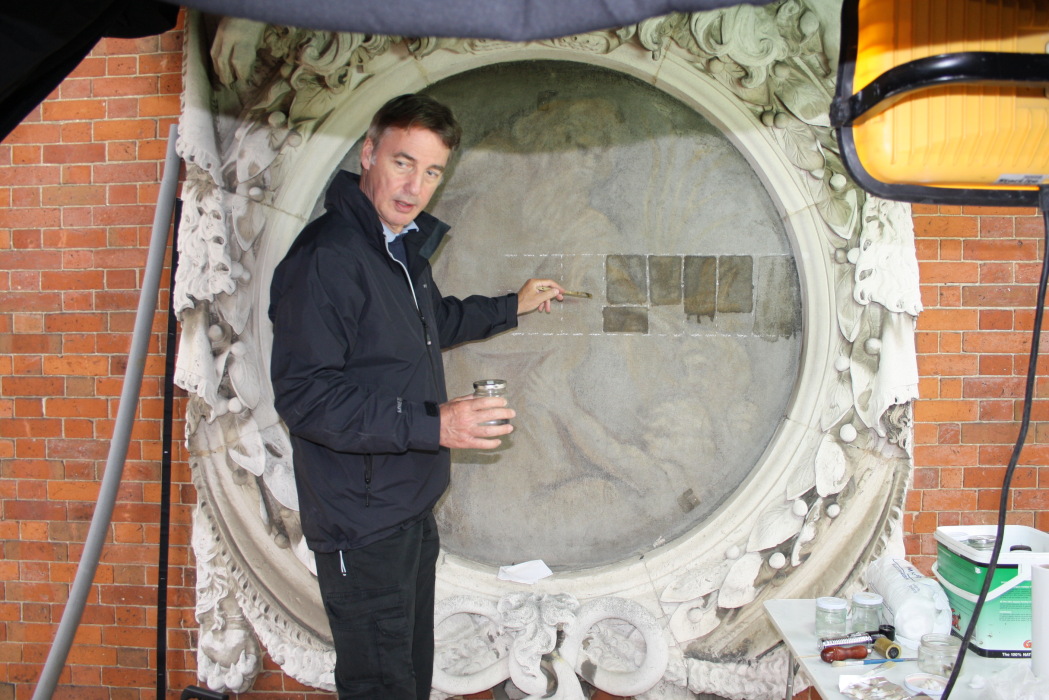
My father David Perry, Richard Lithgow and I all started out working for the Eve Baker Trust, a conservation firm began by Eve Baker and her husband Professor Robert Baker in the 1950s. We began the Perry Lithgow Partnership in 1983 when we decided we needed to take wall painting conservation in a more professional direction. We wanted to improve certain techniques, embrace different materials, and to foster closer relationships with other conservation professionals; all of which working with the Bakers constrained.
It was a steep – but very liberating – learning curve to suddenly be in the position of making one’s own choices and building relationships with clients and architects, with all the added responsibility that that includes. In addition, through the nascent UKIC1 and attendance at lectures, case study days, etc, we had for the first time the opportunity to meet our fellow conservators, exchange ideas and contacts, and also, more importantly, to work with many of them.
Working for yourself brings many challenges: practical, financial, theoretical, administrative, and I have been extremely fortunate in having two business partners that were highly skilled in these departments, meaning that we were always able to complement and provide good support for one another. As the saying goes; ‘a problem shared is a problem halved’. After over forty years in business, the last year has shown me just how important that is in our profession, particularly for those of us in private practice.
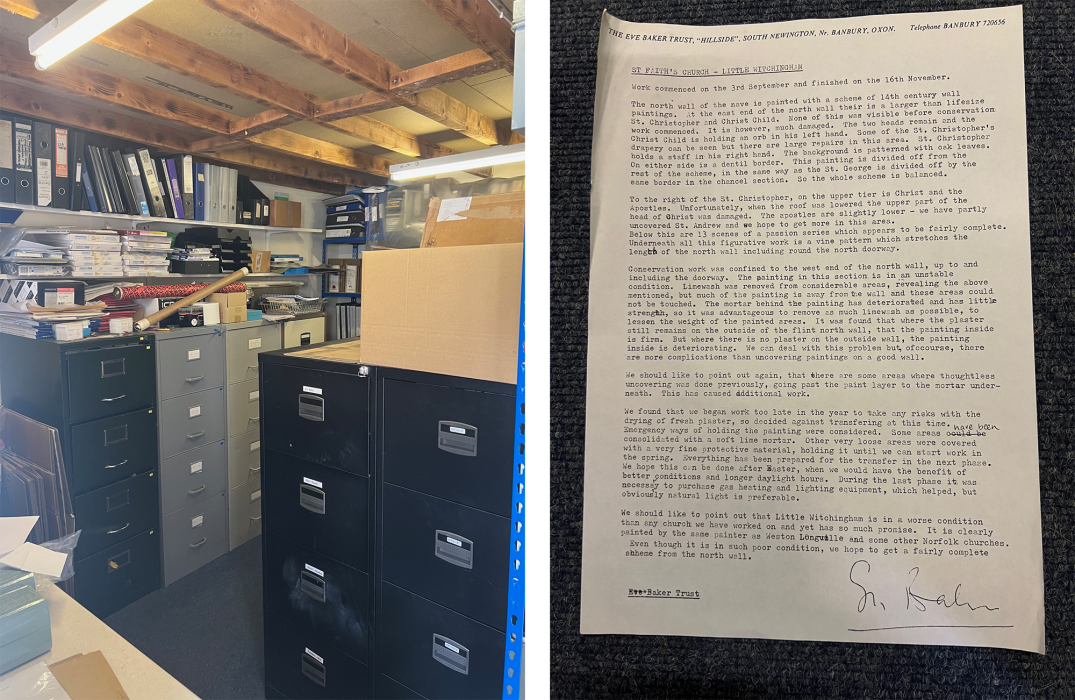
Fig. 3 A typical EBT report consisting of 1 page, of which only 1 paragraph covers the conservation works carried out (© The Perrry Lithgow Partnership Ltd)
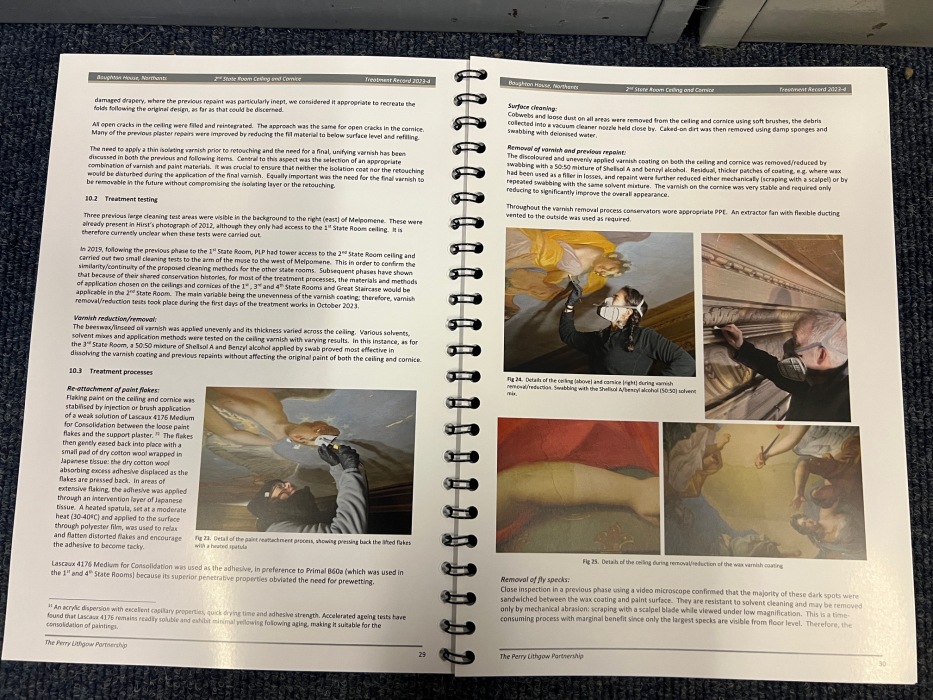
When starting up the partnership, one of the areas we most wanted to improve upon was our approach to documentation. Whilst the significance of keeping good records was recognised, the expectations of what is appropriate have changed since the Bakers’ time in the 1950s to the 1980s. This was partly in response to technology – the use of computers and digital cameras rather than pen, paper and black and white photography – as well as developing standards, as exemplified by Sharon Cather, David Park and the Courtauld course, all of which began to so significantly influence our profession.
I should add that it is important to acknowledge that the Bakers were pioneers of a conservation-based approach to wall paintings, and that they prioritised the practical side over writing about it, especially – as was often the case – if resources were stretched. Something I am sure many of us can sympathise with. However, such detailed recording of conservation projects had been virtually non-existent under the Eve Baker Trust, as the paucity of their archive, which myself and Katy as Trustees hold, attests.
The lack of all that unique and potentially useful information acquired by the Bakers over so many years is regrettable. We still get regular requests for information about historic Baker projects from other conservators, architects etc., almost all of which we are sadly unable to help with, being able to provide only very limited records, if at all. We were fortunate in that my father was able to fill in many gaps with his verbal recollections of his time working with the Bakers, as were Richard and I to a lesser extent. But this is not necessarily always a reliable way to collect valuable information, although verbal testimony undoubtedly has its place. For example, written – and even photographic – documentation does not always include useful descriptions of how treatments are actually carried out; the equipment used; problems encountered and how they were resolved. I still regret not asking my father more about his time working with the Bakers, as this information is now lost.
To illustrate the difference between the way we capture information compared to our previous employers: in our archive storage space there is one filing cabinet of Trust job files and five PLP cabinets just for hard copy files. This doesn’t include all our separate reports for major multi-phase projects, such as Peterborough Cathedral – which has 20 hard copy reports alone – numerous boxes of photographs and slides, or all our digital files, for works completed over the last 42 years. In total we have worked on well over 300 different projects since 1983, generating a vast amount of information.
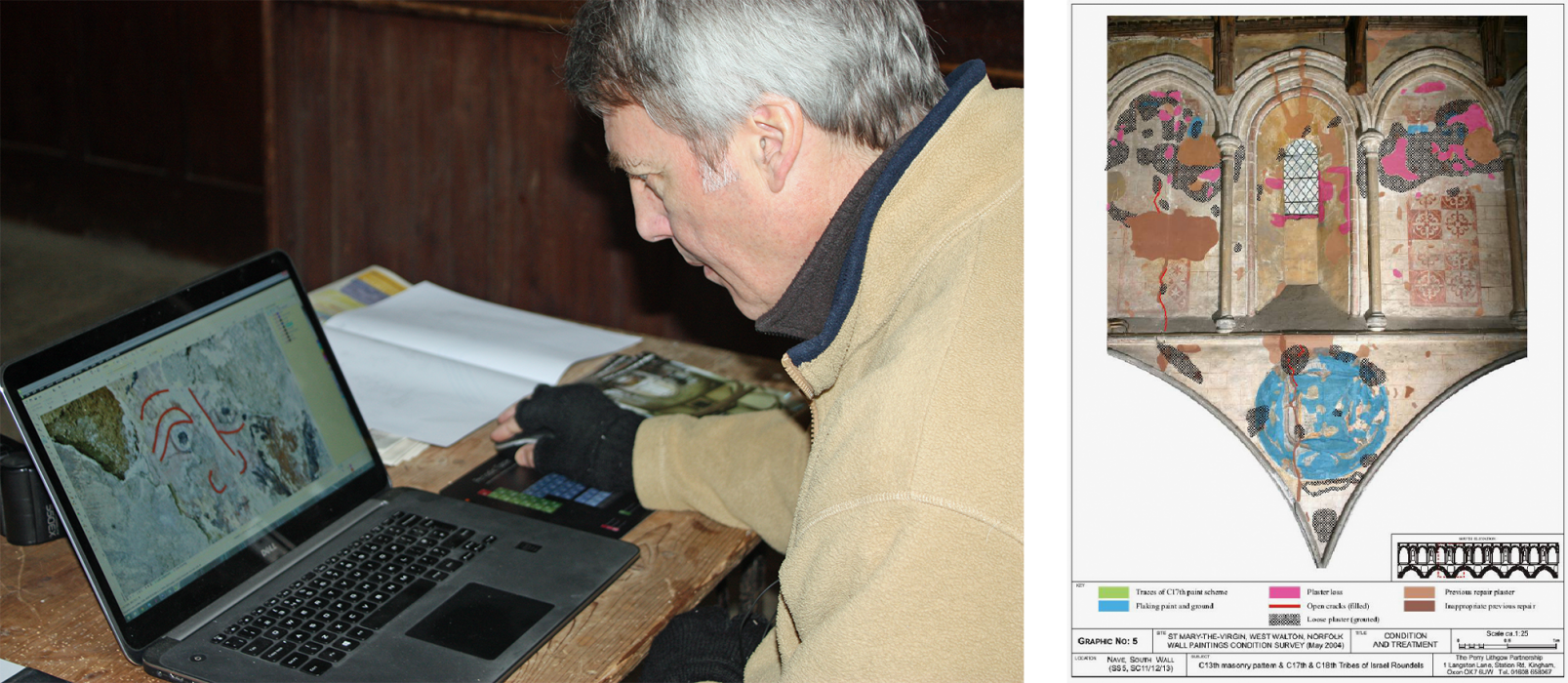
Fig. 6 An example of a PLP condition graphic from West Walton church, Norfolk (© The Perrry Lithgow Partnership Ltd)
It is important to understand however, that it is of course, not the quantity, but the quality of the documentation produced, and how it must be fit for purpose. One of our focuses has been on creating condition graphics that inform both the conservator and the client or funding bodies of the extent of a particular conservation issue. They serve as a visual reference and a source of information for any future investigations and/or remedial interventions. They can also be used to produce interpretation material for visitors, who – despite our enthusiastic responses – unsurprisingly often struggle to appreciate the finer details of a wall painting that is perhaps only 30-40% extant. I am sure we have all had those conversations.
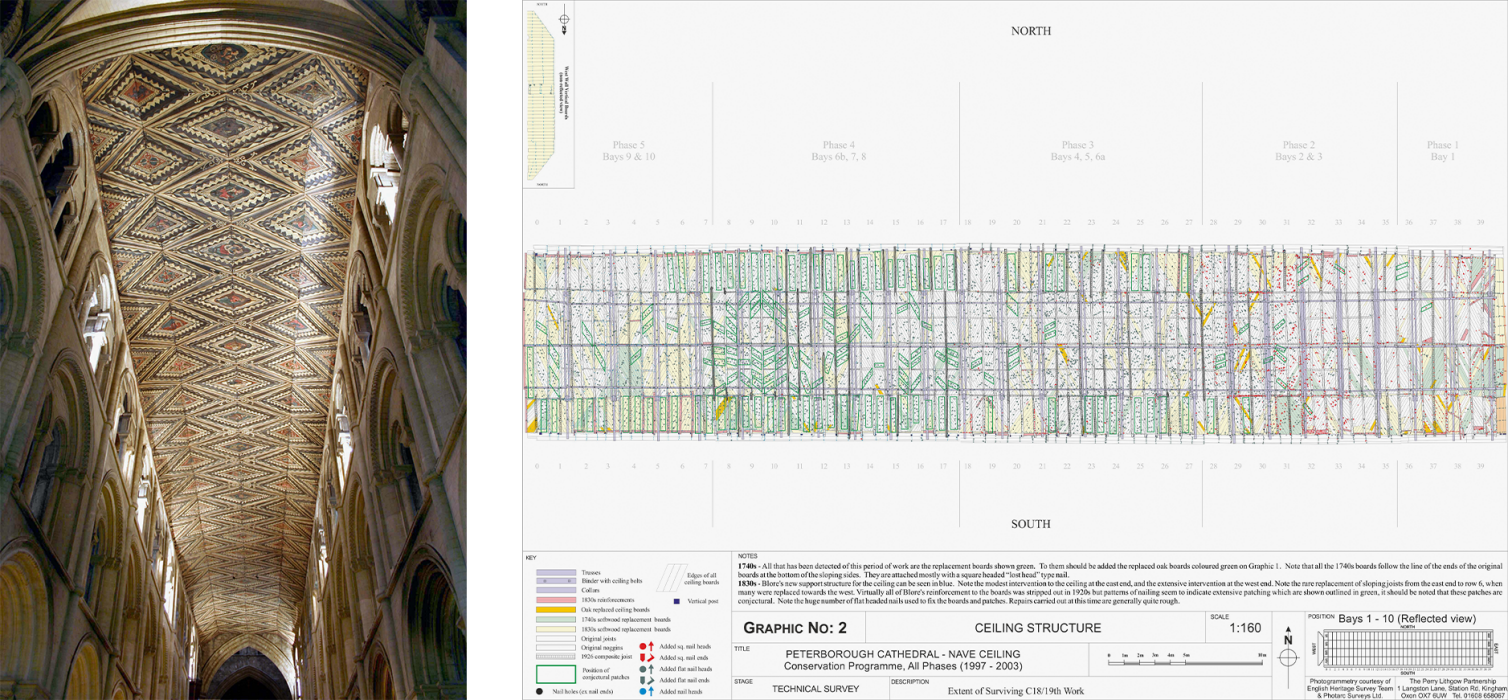
Fig. 8 Typical example of a layered graphic from the conservation record for the nave ceiling, Peterborough Cathedral (© The Perrry Lithgow Partnership Ltd)
In our early 2000s project to conserve the nave ceiling at Peterborough Cathedral this was possibly taken to its extreme, where for example every detail – however seemingly irrelevant at the time – was recorded: the emphasis being on the collection rather than the display of information. This included things like identifying, counting and categorising every single nail and screw on the nave ceiling. A thankless and neck-breaking task at the time, but one considered important for this unique opportunity for full access to the underside of the ceiling. While a considerable amount of the collected data is available in written and graphic formats; only a small selection was presented in the final publication. All additional data has been archived as source material and is therefore available for future research.
There is also, of course, the perennial issue of the clients’ willingness to pay for detailed documentation, versus the actual time one spends on producing it. I am sure that all those here in private practice consistently undercharge for the production of survey and treatment records, simply because to charge realistically is perceived as making them less competitive. Despite this, our consciences do not allow us to compromise on the quality of the documentation, as we understand the value of it for future conservators and custodians; meaning that we effectively subsidise this element of the work.
It is therefore an essential part of our job to impress upon and explain to the client the importance of a certain level of detailed documentation at the outset of every conservation project, perhaps using examples of previous reports as illustrations. And, to be fair, in recent years I have noticed – across the board, whether public, institutional or private clients – a better understanding and appreciation of the value of good conservation documentation, and the fact that this needs to be charged at a realistic rate.
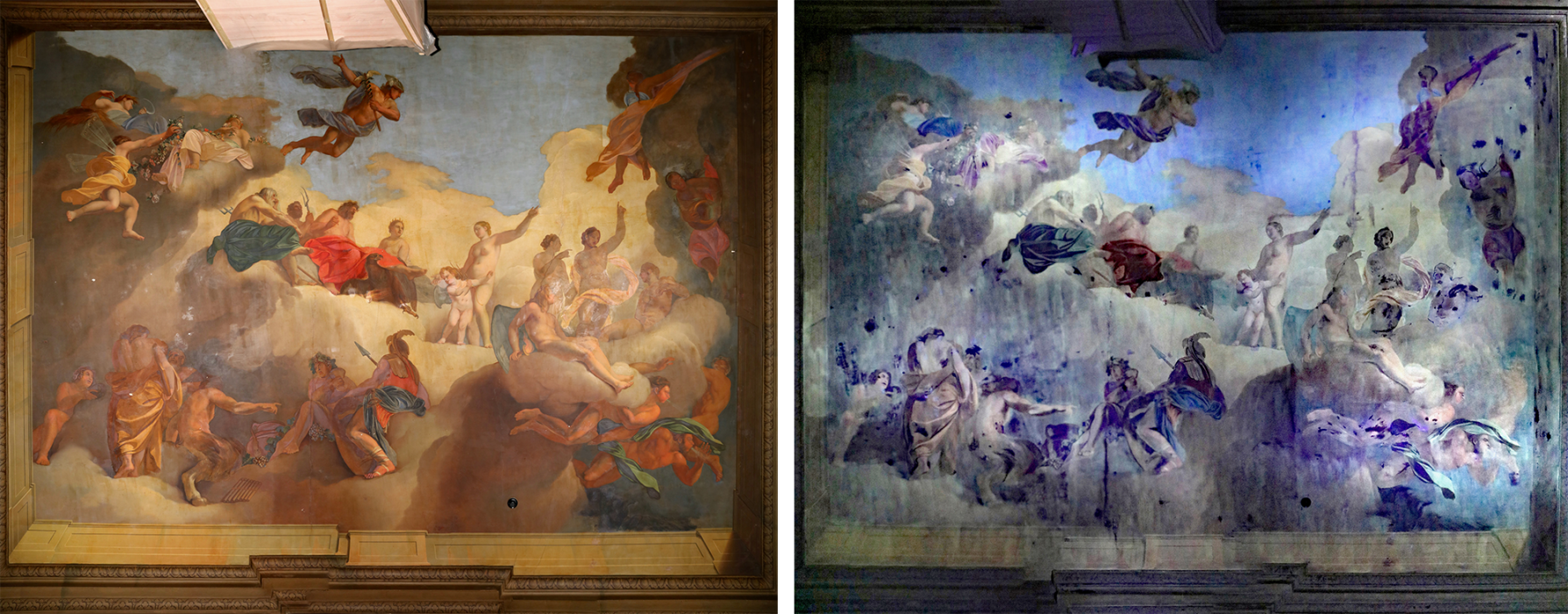
Fig. 10 Boughton House, 1st State Room ceiling, before conservation in UV illumination to show previous repaint (© The Perry Lithgow Partnership Ltd)
The necessity and importance of leaving a trail for future conservators, especially if you are in private practice, is something that has underpinned our approach to documentation throughout our careers. Having known David Park for many years – and in fact worked with him for the Bakers at Barton church in the late 1970s, when he briefly dipped a toe into practical conservation – we were delighted to be able to collaborate on several practical projects with the Courtauld students, and to regularly contribute our various reports to the National Wall Paintings Survey archive. Just as importantly, we have been able to use it as a valuable source of information when preparing our own surveys.
However, the elephant in the room that I, and many others in private practice – several of whom will be in this room – now face, is what to do with all this information – both hard copy and digital – once we retire. Needless to say, as the clock is ticking, I would welcome any suggestions and preferably offers of a good home for our archives that will still allow full access for research. I, and of course Richard, would very much like to think that we can, in this way, continue contributing to the development of conservation into the future.
1 In 2005, the United Kingdom Institute for Conservation (founded in 1977), was incorporated into The Institute for Conservation (Icon).
